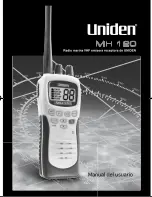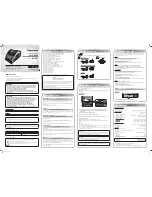
ExpWave 240B Secure Outdoor Ethernet Radio Link
Firmware & Configuration File Maintenance
12-3
Login Type
Anonymous.
This is when a user I.D. and password is automatically supplied to the
server for anonymous access. Anonymous logins will work only if your
ISP or service administrator has enabled this option.
Normal.
The server requires a unique User ID and Password to login.
Transfer Type
Transfer files in either ASCII (plain text format) or in binary mode.
Initial Remote Directory
Specify the default remote directory (path).
Initial Local Directory
Specify the default local directory (path).
12.2.5 Backup Configuration Using TFTP
The ExpWave supports the up/downloading of the firmware and the configuration file using TFTP (Trivial File Transfer
Protocol) over LAN. Although TFTP should work over WAN as well, it is not recommended.
To use TFTP, your computer must have both telnet and TFTP clients. To backup the configuration file, follow the
procedure shown next.
Step 1.
Use telnet from your computer to connect to the ExpWave and log in. Because TFTP does not have any
security checks, the ExpWave records the IP address of the telnet client and accepts TFTP requests only
from this address.
Step 2.
Put the SMT in command interpreter (CI) mode by entering 8 in
Menu 24 – System Maintenance
.
Step 3.
Enter command “sys stdio 0” to disable the SMT timeout, so the TFTP transfer will not be interrupted. Enter
command “sys stdio 5” to restore the five-minute SMT timeout (default) when the file transfer is complete.
Step 4.
Launch the TFTP client on your computer and connect to the ExpWave. Set the transfer mode to binary
before starting data transfer.
Step 5.
Use the TFTP client (see the example below) to transfer files between the ExpWave and the computer. The
file name for the configuration file is “rom-0” (rom-zero, not capital o).
Note that the telnet connection must be active and the SMT in CI mode before and during the TFTP transfer. For
details on TFTP commands (see following example), please consult the documentation of your TFTP client program.
For UNIX, use “get” to transfer from the ExpWave to the computer and “binary” to set binary transfer mode.
12.2.6 TFTP Command Example
The following is an example TFTP command:
tftp [-i] host get rom-0 config.rom
where “i” specifies binary image transfer mode (use this mode when transferring binary files), “host” is the ExpWave
IP address, “get” transfers the file source on the ExpWave (rom-0, name of the configuration file on the ExpWave) to
the file destination on the computer and renames it config.rom.
12.2.7 GUI-based TFTP Clients
The following table describes some of the fields that you may see in GUI-based TFTP clients.
Table 12-3 General Commands for GUI-based TFTP Clients
COMMAND
DESCRIPTION
Host
Enter the IP address of the ExpWave. 192.168.1.1 is the ExpWave’s default IP address
when shipped.
Send/Fetch
Use “Send” to upload the file to the ExpWave and “Fetch” to back up the file on your
t
















































